Educating the “Builders of Tomorrow” in UVA’s January Term
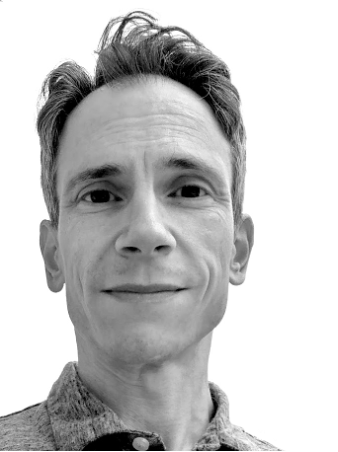
Benjamin Laugelli is Assistant Professor of Engineering and Society in the University of Virginia’s School of Engineering and Applied Science. He teaches courses that examine social and ethical aspects of engineering design and practice, including Designing for a Sustainable World; Technology and the Frankenstein Myth; The LEGO Course: Engineering Design and Values; STS and Engineering Practice; and The Engineer, Ethics, and Professional Responsibility. In this Thoughts From the Lawn, Professor Laugelli takes us into his J-Term LEGO classroom with this in-depth examination.
A gentle winter snowfall, a crackling fire, a warm mug of cocoa – these are things we often associate with the month of January. For a group of engineering undergraduates, however, January also brings a unique academic experience during the University’s winter semester in a class called “The LEGO® Course: Engineering Design and Values.” The course examines the history, brand identity, and design philosophy of the LEGO Group to teach students about the role social and ethical perspectives play in engineering design. Drawing inspiration from the company’s philosophy of “learning through play,” the course pairs a topical seminar discussion in the morning with a hands-on studio class in the afternoon in which students gain experience in aspects of design by developing their own LEGO concept models.
The LEGO Course and Engineering Design
Although at first glance, the LEGO Group’s products and practices may not seem to have much to do with engineering design, in fact, the company’s operations touch on every major offered by UVA’s School of Engineering and Applied Sciences. To begin, it’s worth noting that the current CEO of the LEGO Group, Niels B. Christiansen, is an engineer by training and received an MSc in Engineering from the Technical University of Denmark(1).
Beyond this, a short virtual tour of a LEGO factory reveals that nearly all of the factory’s operations are automated(2). The machines and facilities that produce the various LEGO parts or elements would require engineers skilled in civil, mechanical, electrical, computer, and systems engineering. Further, in the next few years, the LEGO Group plans to open factories in Vietnam near Ho Chi Minh City and Richmond, VA, in the U.S. that operate as carbon-neutral facilities from the start. These same engineers would be involved in the planning, construction, and operations of those new carbon-neutral factories. And LEGO designers and engineers regularly collaborate to ensure the stability and structural integrity of the massive brick-built installations that adorn the company’s global theme parks and retail stores.
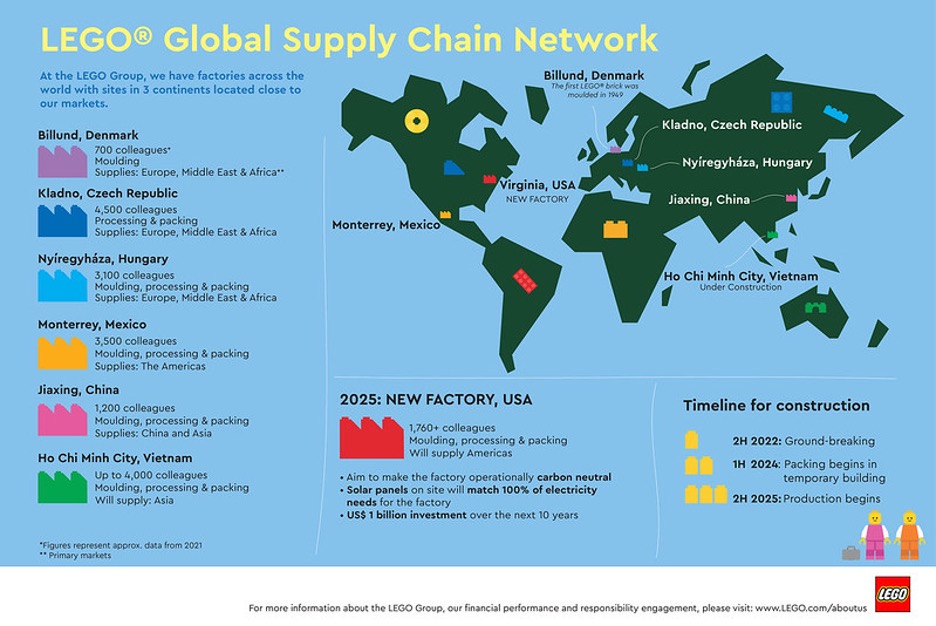
Then there are the LEGO elements themselves, most of which are made of high-quality ABS plastic. Chemical engineers and materials scientists would be needed to develop the plastic as well as the injection molds and carefully calibrated molding process, which ensures just the right amount of tension or “clutch power” to allow LEGO elements to connect firmly to each other and yet be taken apart with relative ease. In addition, the LEGO Group is actively developing more sustainable alternatives to ABS plastic, such as bioplastics made from plant material(3) or PET plastic made from recycled plastic bottles(4).
What about fields such as aerospace or biomedical engineering? Over the years, the LEGO Group has partnered with NASA to develop several space-themed sets, such as the LEGO NASA Saturn V and the LEGO Friends Space Academy. Many of these sets aim to inspire young builders to consider careers as astronauts, scientists, and aerospace engineers. As for biomedical engineering, during the early days of the Covid-19 pandemic, the LEGO factory in Billund, Denmark, began producing face shields for Danish healthcare workers at a time when personal protective equipment was in short supply(5).
Finally, there are the LEGO sets the company produces and sells each year. The LEGO models featured in retail sets are developed for a variety of product lines by teams of professional LEGO designers. These designers come from a wide range of design backgrounds, including graphic, industrial, and textile design, as well as architecture and engineering(6). So, engineers of all kinds are involved at every level of the company’s operations. And some of the students in the class have begun to consider ways they could leverage their engineering training and technical expertise to pursue career opportunities working for the LEGO Group.
The LEGO Course: Seminar Discussion Classes
Classes in UVA’s January term typically meet for 4-6 hours each day for an intensive two-week period. Capitalizing on the unique structure of the winter semester, the LEGO Course offers both a seminar and studio experience. Each day, class begins with a morning seminar discussion. The seminars are topical and focus on aspects of the LEGO Group’s history, brand identity, and design philosophy that illustrate how its core values affect design and management decisions. Studying the LEGO Group affords engineering students the opportunity to consider what it looks like when a company engaged in design of various kinds attempts to prioritize socially responsible values.
From the company’s earliest days, it has been guided by the motto of its founder Ole Kirk Kristiansen, “Only the best is good enough.” Over the years, the LEGO Group has elaborated on that motto to develop a set of core values that define its brand. These include imagination, creativity, fun, learning, caring, and quality. These values form the basis of an aspirational code of conduct that takes expression in a series of promises the company makes to support the play experiences, people, partners, and planet as they are impacted by its operations. In addition, the LEGO Group has developed principles and products that support values of diversity and inclusion, sustainable development, and anti-war violence. Finally, at the heart of the LEGO Group’s brand identity is its forward-looking mission: “to inspire and develop the builders of tomorrow”(7). In recent years, the LEGO Group’s commitment to practicing its values has earned it several accolades, including being ranked first in corporate responsibility by Reputation Institute in 2019(8).

After students learn about the LEGO Group’s formative years and brand identity, they examine a series of episodes in its recent history that illustrate the company’s continuing efforts to align and sometimes realign, its products and practices with its mission and values. For example, students examine the company’s ventures in open innovation, including LEGO Mindstorms, LEGO Architecture, and LEGO Friends, each of which involved soliciting input from various groups of outside stakeholders, whether adult fans of LEGO (AFOLs) or the young girls whose ideas would shape the LEGO Friends product line. The class also considers topics such as race, identity, and the evolution of the LEGO minifigure, as well as the LEGO Group’s evolving stance toward war, violence, and conflict in play, and its recent initiatives in corporate responsibility and sustainability.
The LEGO Course: Studio Design Classes
After a break for lunch, the class reconvenes in the afternoon for a hands-on studio design session. In the studio classes, students work on two major design projects in which they develop their own concept models that have to align with the company’s mission and values. The design projects provide students the opportunity to put into practice the ideas and perspectives they have studied in the morning seminar discussions. For their LEGO designs to succeed, they need to work not only technically or functionally, but also socially and ethically within the framework of principles and values that define the LEGO brand.
In the first design project, students interact with the LEGO Creator 3-in-1 product line. LEGO Creator 3-in-1 sets provide bricks and instructions to build three thematically related models that increase in detail and functionality. For example, the set “Mighty Dinosaurs” features models of a flying pterodactyl, a triceratops, and a tyrannosaurus rex.

For the LEGO Creator 3-in-1 project, students are tasked with developing a concept design for a fourth buildable model related to the first three that uses only the parts that come in the original set. The project cultivates creativity and problem-solving skills while working with the kinds of constraints engineers often operate under. In past semesters, students working with the “Mighty Dinosaurs” set have built fourth models of a stegosaurus and ankylosaurus, as well as aquatic dinosaurs such as a mosasaur and plesiosaurus.
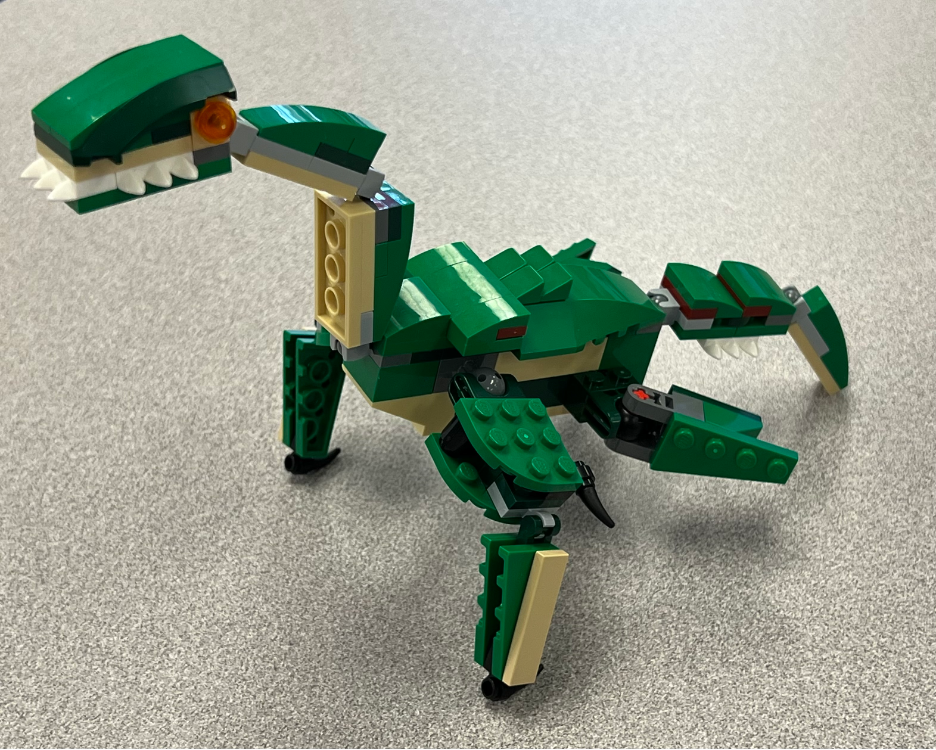
As they progress on the project, students make entries in a notebook to document their design process and reflect on how their model aligns with the LEGO Group’s design philosophy and brand identity. By the end of the project, students have gained experience in embodying the LEGO Group’s values of imagination, creativity, fun, and learning in a model that demonstrates the creative potential of the LEGO brick system by extending the play experience of the original LEGO Creator 3-in-1 set.
For the second design project, students work with the LEGO Architecture product line, which was developed through an open innovation venture with professional architect Adam Reed Tucker(9). LEGO Architecture sets feature brick-built models of famous structures and city skylines from around the world that celebrate fantastic feats of human architectural and engineering design. For example, the LEGO Architecture Tokyo Skyline set features micro-scale models of the Tokyo Skytree, Tokyo Tower, and Chidorigafuchi Park, among others, with Mount Fuji rising in the background. LEGO Architecture sets are intended primarily for display, and many are sized to sit handsomely on a desktop or in a bookcase.
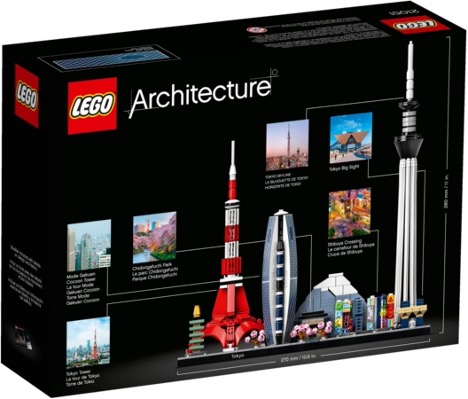
The LEGO Architecture project intersects with the LEGO Group’s open innovation initiatives as well as its emphasis on the values of sustainability. Students are asked to imagine that the LEGO Group is soliciting concept designs for LEGO Architecture models that feature World Heritage Sites. The goal of these models is to foster appreciation and support for sites of profound natural and cultural value that are worth preserving for future generations.
Students begin by researching World Heritage Sites and developing a preliminary concept to pitch to a design team of their peers. After hearing the various pitches, the team selects one concept to develop together in the days ahead using a LEGO digital design platform called Bricklink Studio 2.0. Student models have ranged from famous cityscapes such as Rome, Italy and Rio de Janeiro, Brazil to sites of natural wonder such as the Great Barrier Reef off the coast of Australia and Vatnajökull National Park in Iceland.
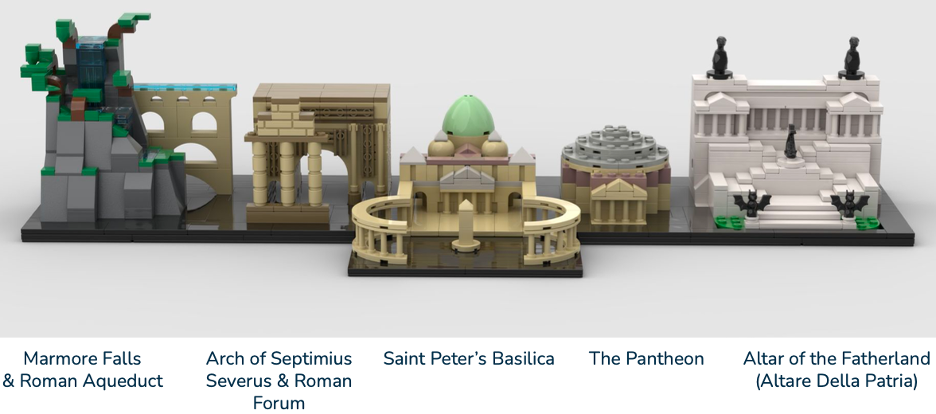
To describe their concept models, students draft a conceptual design proposal, which is a professional document engineers write in response to a request for proposal (RFP) from a prospective client. The project culminates in a formal presentation of the concept model to the class and a discussion of the challenges the team had to overcome in representing the World Heritage Site with LEGO bricks.
By the end of the class, students have gained practical hands-on experience in the design process and have acquired resources for considering how to embody values of social responsibility in specific design choices and product architecture. Although LEGO bricks are not the medium that most students are likely to use professionally, as aspiring engineers, they are the “builders of tomorrow.” The technologies they develop over the course of a career will shape the practices of global societies for a generation or more. It’s my hope that the LEGO Course offers students resources to use their technical expertise, coupled with creativity and moral imagination, to build a better tomorrow for us all.
References
2. https://www.youtube.com/watch?v=ChZotngQ3_8
3. https://www.lego.com/en-us/aboutus/discover/stories/plants-from-plants
4. https://www.lego.com/en-us/aboutus/news/2021/june/prototype-lego-brick-recycled-plastic
5. https://www.youtube.com/watch?v=hjZBiwDjocA
6. https://www.lego.com/en-us/careers/design/
7. https://www.lego.com/en-us/aboutus/lego-group/the-lego-brand
9. https://www.lego.com/en-us/history/articles/i-lego-architecture
- A Revolution in the Air: The Wright Brothers Take to the Sky on December 17, 1903
- Musings on National Violin Day
- Making the Promise Real: How a UN Tax Convention Can Fulfill the UNDHR’s Vision
- UVA Club of Atlanta: Virtual Pilates Class
- UVA Club of Vietnam: J-Term Farewell Social
- UVA Club of Charlottesville: Hoos Reading Hoos January Book Club